Travel Tip: How to Avoid Mosquitoes and Tick Bites When Traveling and at Home
Travel Tip: How to Avoid Mosquitoes and Tick Bites When Traveling and at Home
By Dan Dudek
What used to be inconvenient and mildly painful, itching bites of mosquitoes and ticks has been escalated to the very real possibility of obtaining Lyme disease, Rocky Mountain Spotted Fever and now even West Nile disease; as well as other mosquito and tick carried diseases. Most of this article discusses avoiding bites when traveling, especially camping; however, many tips for avoiding bites in your yard at home are also included.
Genetically, I have always been prone to mosquito bites. Given this, I have usually taken precautions to avoid being bit, but “it cannot happen to me” syndrome hit my wife and I hard a couple of years ago when we both contracted Rocky Mountain Spotted Fever. We were unaware that we were RV camping in a tick infested area; and since it was off-season for mosquitoes, we did not take our normal precautions to avoid being bitten.
Since I am so prone to bites, I have learned over the years what works and what does not. I am also always interested in new products that will help me in the battle with biting insects, such as mosquitoes, no-see-ums, horse-flies, chiggers, flies, etc.; and arachnids, such as ticks, scorpions, spiders and mites.
At home, I take care to avoid having anything that can hold standing water; and use cakes such as Mosquito Donuts, that contain BTI in my fountains to kill mosquito larvae.
So if want to avoid being bit by annoying insects and arachnids, including those that can carry some nasty diseases, please consider the following:
- Avoid wearing white. Any white (or light colored) clothing, i.e. socks, shirts, shoes, pants, jackets, etc. will definitely attract the biting insects you want to avoid.
- Cover up anytime you will be brushing against tall grass or bushes. Thus if you are hiking, mountain biking, hunting, etc. you need to wear long-sleeve shirts and pants, and wear a hat; and tuck your pants into your socks.
- Tape your pants shut. When the insects are in-season, I take the extra precaution of using duct-tape to secure my pant legs to my boots or long socks. You wrap the tape around your ankles with the sticky side out. This does wonders to avoid bites on the lower legs.
- Treat your outdoor clothes with insect repellant containing permethrin. Spray-on products such as REPEL Mosquito Stop and Sawyer Premium Insect Repellent Clothing treat clothes for two to six weeks. I have found these products to work as advertised and recommend them especially when hiking or hunting in areas when the insects and arachnids (ticks, spiders, scorpions, etc.) are in-season.
- Use insect repellent. My skin is very sensitive to bug spray. I can break out in a very painful rash if I do not carefully apply the repellent. I have found that as long I do not have cuts or scrapes, I can tolerate a bit of repellant such as Cutter Skinsations (7% DEET), lightly applied to my skin. However, I do use these products more liberally on my shoes, socks, pants, shirts and hat. This is normally for situations around the house or campsite where I am wearing shorts, i.e. not expecting to brush against tall grass or bushes. When I need more protection, I cover up and use a product containing a higher percentage of DEET – and you should too. You need a product with 15 to 30% of DEET for maximum protection. I use Off Deepwoods (25% DEET) as I know it works for me in keeping the insects away. I apply this DEET repellent to my clothes, and not directly to my skin; and you may want to do the same. In any case, avoid getting any DEET containing product close to your eyes, nose and mouth.
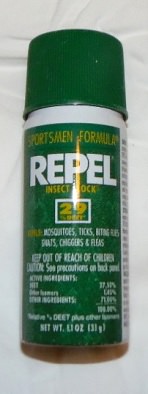
Sportsmen Formula REPEL Insect Block
I always carry a small spray of Sportsmen Formula REPEL Insect Block (29% DEET) in my backpack or day-pack. Just recently I was visiting the Ancient Roman Site and Archeological Museum in Varna, Bulgaria. While underground in a burial chamber passage way (you had to walk bent over due to the lack of head space), my ankles were being bitten by some unknown and un-seeable insects. A couple of spays on my socks did the trick to have these irritating biting insects leave me alone. Be prepared! (I also carry a tube of Cortizone-10 to get almost instant relief from any bites that do occur.)
Do not use a combination product for sun protection and insect repellent. For sun protection you need to liberally apply the product directly to your skin; insect repellent should only be applied sparingly.
- Use the Thermacell Mosquito Repellent Device. This product works as advertised as far as I can tell. It is advertised to keep bugs away for 15 feet and can be carried on your person if desired (it costs between $20 and $25, however watch for 2 for 1 sales frequently offered by Internet camping web stores) Note: this device is pictured to the right with its optional carrying case that has pockets for extra Butane Cartridge and extra mats.
At Edisto Beach State Park in South Carolina, there is a ranger station in the auxiliary camping area for checking in campers. The small facility is open for the most part, and during certain times of the year that area is subject to a lot of mosquitoes and no-see-ums. During the course of registering, I was talking to the ranger and she told me about how the Thermacell Mosquito Repellent Device had solved her problem with being bit by insects. Since that day, I have been using this device and have found I get virtually no bites when it is operating.
- An alternative to using the Thermacell Mosquito Repellent Device (above) would be the Off Clip-on device (about $6 at Wal-Mart). This inexpensive device uses a replaceable refill insert a battery to power a small fan. An on/off button allows you determine when to use the estimated 12 hours of “Head to Toe Protection” the device is advertised to provide; and from my use, the claim appear to be correct.
ThermaCELL Mosquito Device
- Carry a Head net. I do not use it often, but I like to know it is there in case I need it. I have been in the mountains of the northeast U.S. in the summer and in the Australia outback when the flies have been relentless. Head nets can also be a blessing when camping in general and when hiking or biking in particular when no-see-ums are in season. These nets will keep these little guys out of your eyes and nose.
- Spray your RV or camper tires with a product such as Ortho® Home Defense MAX® Insect Killer for Indoor & Perimeter. Insects and bugs of all sorts can enter your RV or camper from the ground. Once you have positioned your vehicle in a campground, spray the bottom of each tire, and all door steps with this type of product. It sets up a barrier that helps reduce the number of insects and bugs getting into your camper.
- Use a Yard Fogger. When setting up a camp for a few days, I use the Cutter Backyard Bug Control flogger to knock down insects, arachnids and other “bugs” around my RV, especially the areas where we will be spending most of our time outside, e.g the area around the fire pit and picnic table. This makes my camping experience much more enjoyable.
Note: At home I also use Cutter’s Backyard Bug Control which attaches to a water hose to spray everything, including patios, chairs, walls, bushes, grass, sidewalks, etc.
- Use citronella candles. When outdoors, I always put out a few citronella candles in the evening when mosquitoes and other biting insects are most active.
- Build a Campfire. I love campfires and cooking over wood. The smoke from these fires is also a good way to keep insects away.
How to Avoid Mosquitoes and Tick Bites
Above Photo: We are camping on the beach at Ft. Clinch State Park in Florida. The nightly campfire was used to keep insects away, often used to cook dinner (several times consisting of the fish we caught in the surf).
- Use a large fan. Most campsites these days offer electrical connections. If you do have electric, consider carrying a large fan with you. You can set this up to keep insects off of you while you are relaxing and off you and your food while eating. It works great! (I know it is a bit of “cheat”, but you can also use the fan to get your wood fire started quickly!)
- Get a Bug-Zapper. I know it sounds like a “only available on TV” commercial, but these small tennis racket looking devices do work, and the Bug Zapper – ZAP Master by Intellectual Solutions, Inc. works well. Plus, you get the satisfaction of attacking and “zapping” the insects that are usually attacking you! (This handy device is available at Wal-Mart for about $8 to $15.)
- Of course, try to avoid being outside around sunup and sunset when mosquitoes are most active and feeding. If necessary to go out during these times, keep a pair of large pants and a large long-sleeve shirt handy so you can slip it on before going outside.
When to Seek Medical Attention
If the person bitten develops a rash, especially a bullet-shaped rash or develops a fever, have that person obtain medical assistance. A classic symptom of a tick infection is an intermittent low-grade fever. West Nile disease symptoms include fever, headaches, body aches, tiredness, vomiting and sometimes a rash on the trunk of the body. If you think you have been bitten by a mosquito have a high fever and severe headaches, you should seek medical assistance.
Some Additional Information About Spiders and Ticks

How to Avoid Spider Bites
- Use insect repellent (anything with DEET or Picaridin will normally work well to repel spiders and ticks and arachnids in general).
- Be very careful of the Black Widow and Brown Recluse Spider which are particularly dangerous and bites must be treated by medical personnel as soon as possible; if bitten by any spider, take a picture of it with your camera or cell phone camera in case you have a severe reaction (it makes it easier for medical personnel to diagnose and treat properly).
Note: Black Widow Spiders are relatively small with a red hourglass shape on its belly; the Brown Recluse Spider (pictured right) is about an inch long and has a shape that looks like a violin on the upper part of its back.
- Check your shoes for spiders, scorpions or tarantulas before you put them on.
- At least once a day, and after a hike or bike ride on trails, check for ticks. (Please be sure to check your pets for ticks as well.)
- If you have a pet, discuss with your veterinarian how best to prevent bites and avoid all vector-borne diseases for your best-friend. Tick-collars are generally okay, but do not apply any insect repellent to your pet unless specifically approved by your veterinarian.
Note: Since spiders build webs and can “float” on a string of silk they produce, you can come into contact with them virtually anywhere outdoors, i.e. you do not have to be walking in tall grass or be in contact with bushes. The same is true for ticks. I have seen many times a tick will “jump-off” a leaf or bush (intentionally or not I do not know) and “float” in a slight wind. If it lands on a host (such as you), it frequently starts finding a nice spot for its meal of blood.
Safely Removing Ticks
Tick bites can cause a number of diseases, including the bacterial types of diseases such as Lyme disease and Rocky Mountain Spotted Fever, so do not be complacent about checking for ticks. Lyme disease is carried by the Ixodes tick (called deer ticks or black-legged ticks). They are very small, about the size of one or two ball-point pen marks, and hard to see. The most common ticks in North America are the American Dog or the Lone Star ticks; they are about the diameter of a pencil eraser’s head.
Note: The deer ticks are so small they are very hard to find unless they are moving; I suggest you pack and use a hand-held magnifying device, preferably one with a built-in light to aid you when doing the very necessary nightly full-body search for ticks. I use one from Carson that works well and has a fold-up handle for ease of packing.
The methods many people use to remove a tick (such as touching with a smoldering match or cigarette, putting on something to smother the tick such as petroleum jelly, kerosene, etc.) should NOT be used! Such methods may cause the tick to expel its fluids into the victim. The recommended method is to:
- Use a small pair of tweezers to grab the body of the exposed tick as close as possible to the buried head (Note: be sure to pack tweezers in your camping First Aid Kit.)
- In a smooth, firm motion, pull the tick straight back to expose the head
- Wash the area around the bite with soap and water
- Do not try to dig into the skin to get any remaining tick parts as this may cause an infection; let these parts expel themselves naturally
- Make a note of the size and shape of the tick (or better yet, take a picture of it with your camera or cell phone camera) and monitor the person for several weeks to ensure no rash develops; if anything does not look right, have your doctor check it out.
Note: To preserve a tick that has bitten someone, you can either wrap in a damp piece of a paper-towel and place in a zipped plastic bag; or place it in a small bottle then cover it with alcohol. While usually not necessary to preserve a tick, it can be used in some cases to help identify exactly the type of infection a person has; if an infection does develop.
If the person bitten develops a rash, especially a bullet-shaped rash or develops a fever, have that person obtain medical assistance. A classic symptom of a tick infection is an intermittent low-grade fever.
Bio:
Dan Dudek has been an avid camper for most of his life, an Eagle Scout and has served on staff at a regional scout summer campground. Dan has tent camped for many years, and now with his wife enjoys RVing. He is also an experienced international traveler; an occasional hunter (turkey and deer); and enjoys sailing, biking, hiking and other out-door sports.

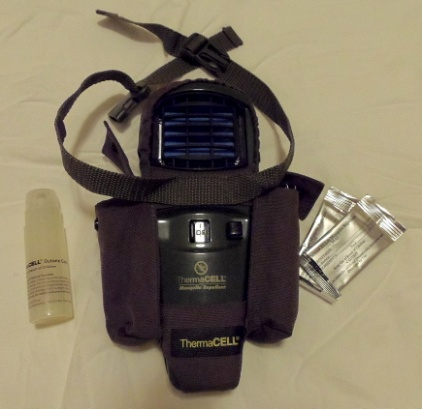
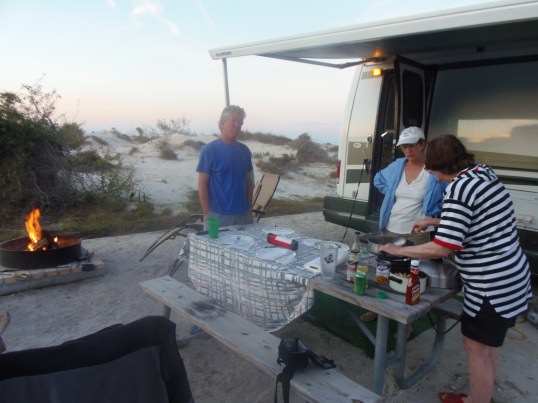
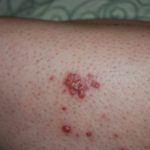


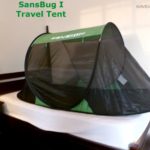
















2 Responses to Travel Tip: How to Avoid Mosquitoes and Tick Bites When Traveling and at Home